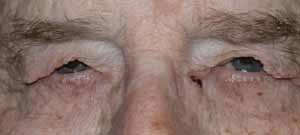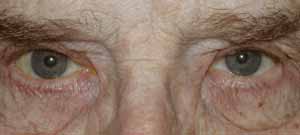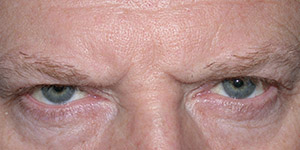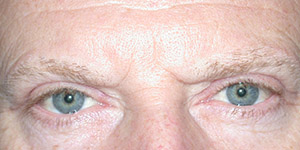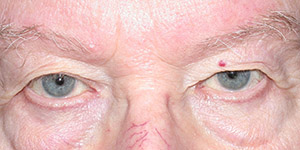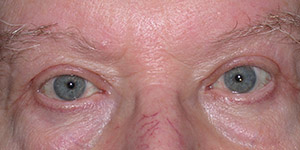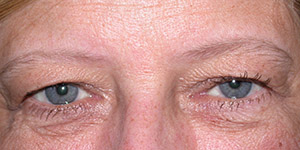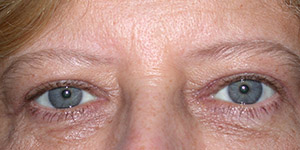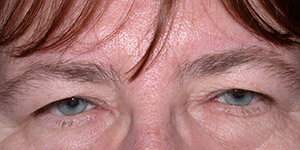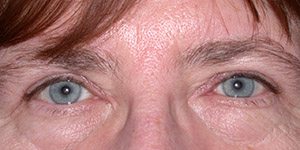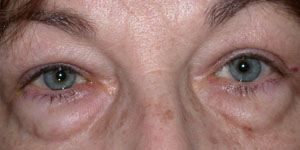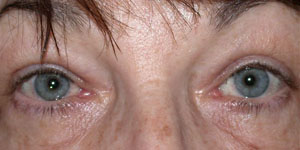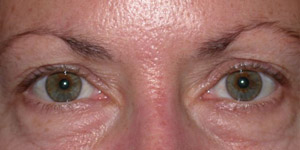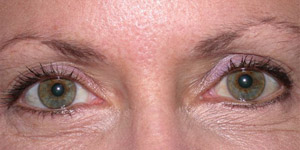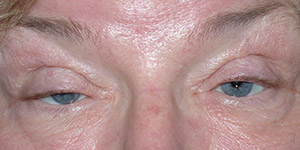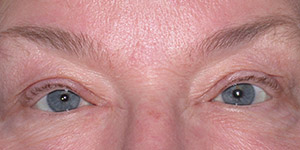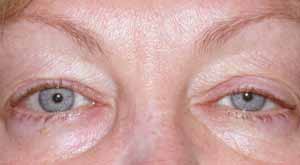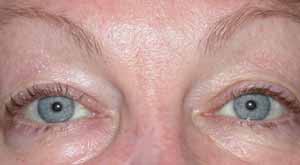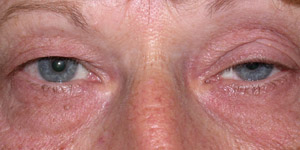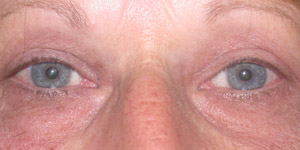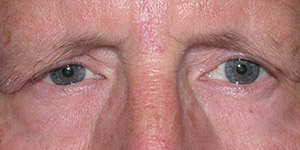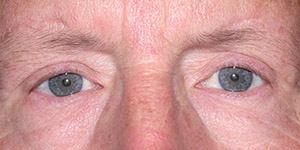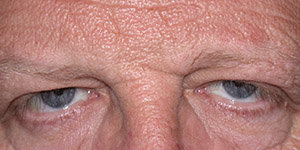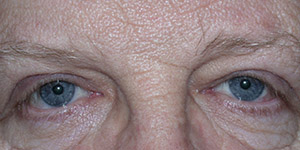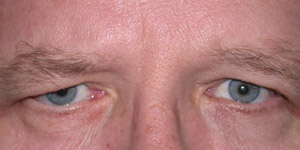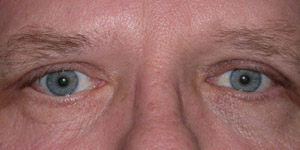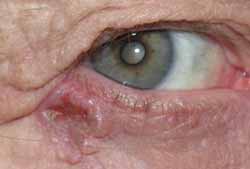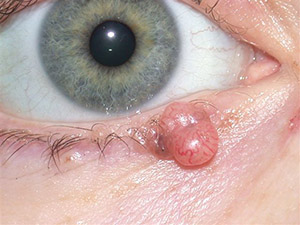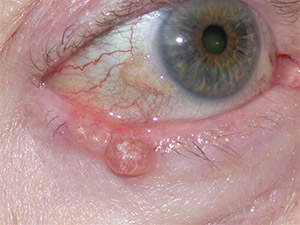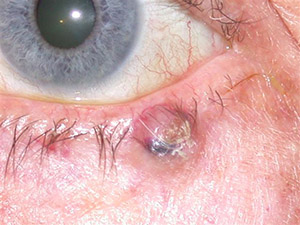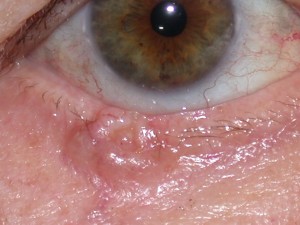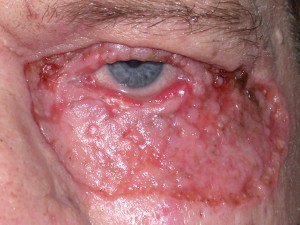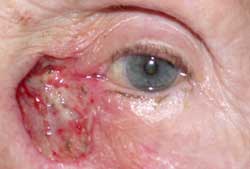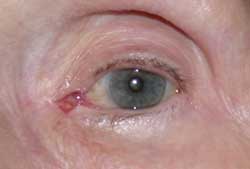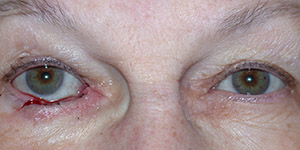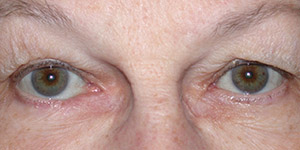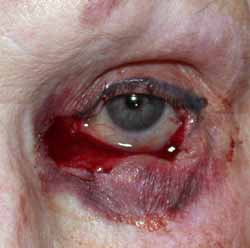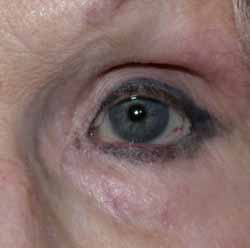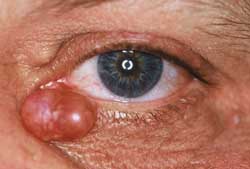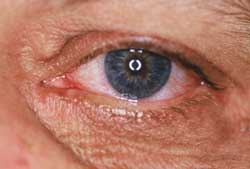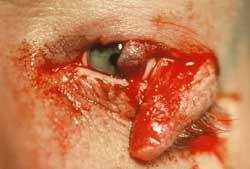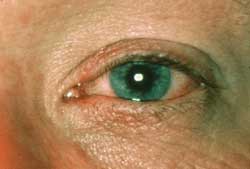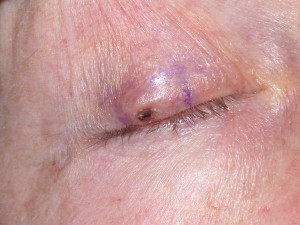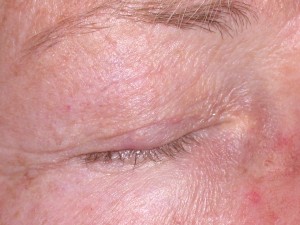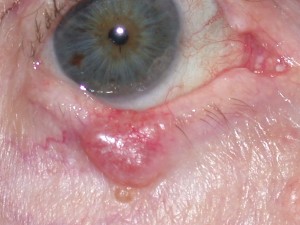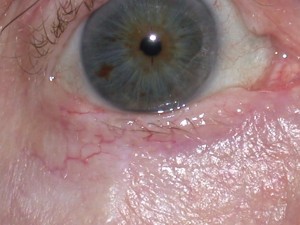
Eyelid Plastic and Reconstructive Surgery
Eyelid Plastic and Reconstructive Surgery
The primary function of the eyelids is to protect the eye. The position and relationship of the eyelids, the skin around the eyelids, and the eyebrows are very important for the function and appearance of the eyes. Age related changes to the eyelids, abnormal growths, and injuries can compromise the eyelids and may require surgical correction.
The following are a few examples of eyelid plastic and reconstructive surgeries. All of the before and after photographs are of surgeries performed by Ronald E. Warwar, M.D. (member of the American Society of Ophthalmic Plastic and Reconstructive Surgery).
Blepharoplasty
With age, the skin of the upper and lower eyelids tends to stretch and become redundant. In addition, the fat that normally resides behind the eyeball can herniate forward, creating “puffiness” or “bags” above and below the eyes. The surgical procedure to remove this excess skin and/or fat is called a blepharoplasty.
Blepharoplasty can be performed on the upper eyelid, lower eyelid, or both. The surgery is performed for either cosmetic or functional reasons. If the eyelid skin overhangs the eyelid and eyelashes, it can obstruct your vision and/or cause your eyes to feel tired or strained. If the surgery is performed to improve these symptoms, it is considered functional and may be covered by your medical insurance.
The surgery is typically performed in our office. Both eyelids are done at the same time. Local anesthesia is used. On the upper eyelid, an incision is made in the natural crease or fold. Excess skin and/or fat is removed, and the skin is reapproximated. The incisional scar generally blends in with this natural crease and with time is usually hardly visible. On the lower eyelid, the incision can be hidden just below the eyelashes (external) or on the inside of the eyelid (transconjunctival). The day after surgery, swelling and bruising of your eyelids is expected. This slowly subsides over the next one to two weeks. Stitches are removed one week after surgery, at which time you can generally go back to wearing make-up and/or contact lenses.
Before and after upper eyelid blepharoplasty
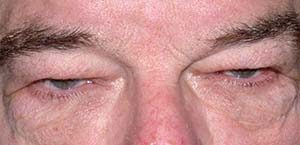
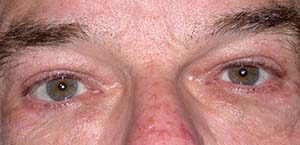
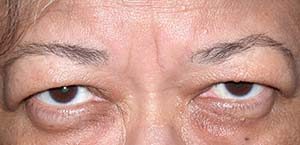
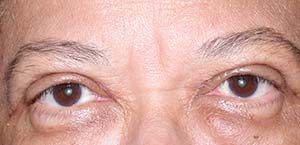
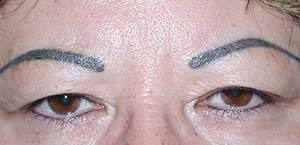
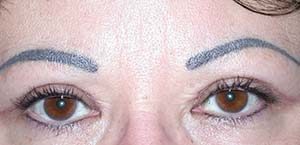
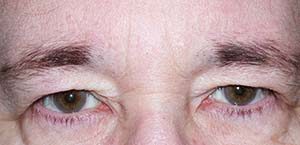
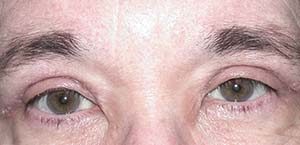
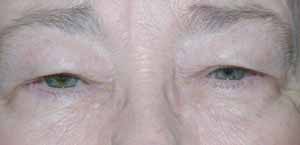
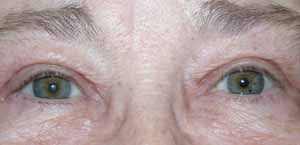
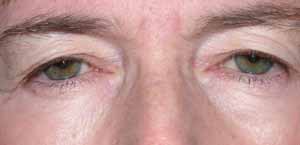
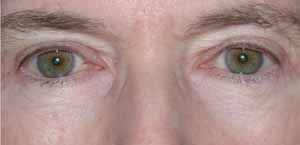
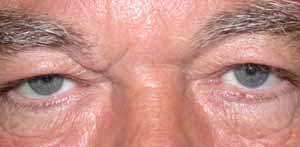
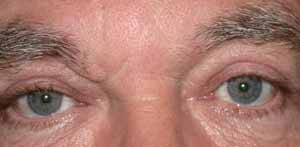
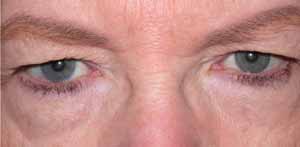
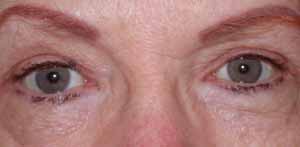
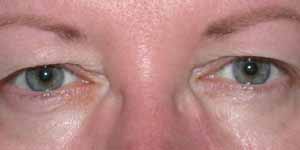
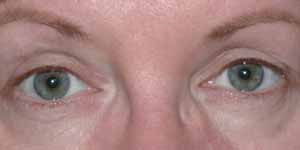
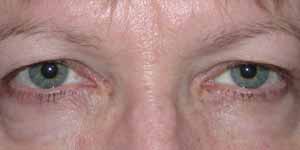
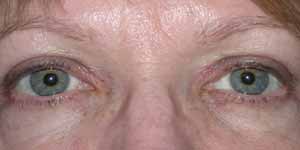
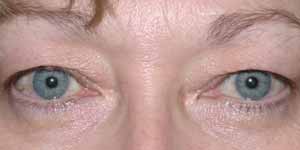
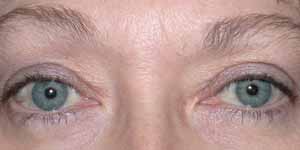
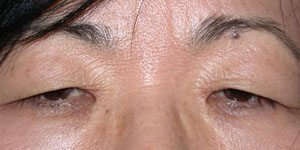
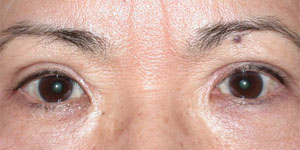
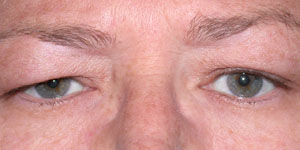
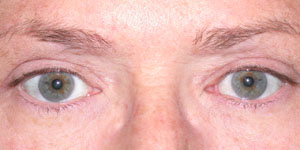
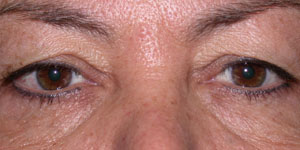
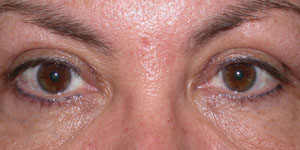
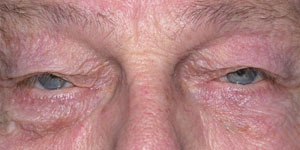
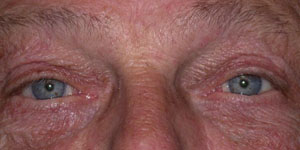
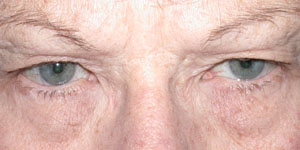
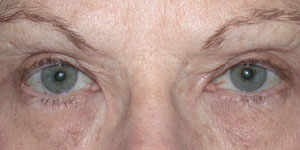
Before and after transconjunctival lower eyelid blepharoplasty
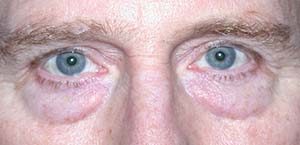
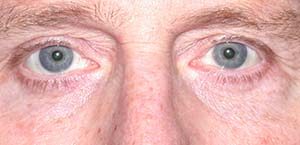
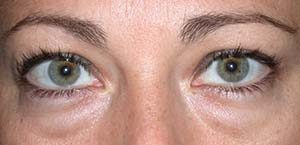
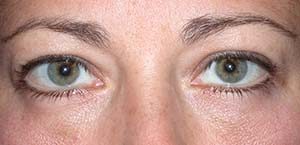
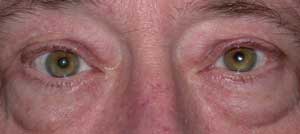
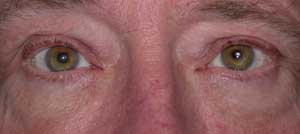
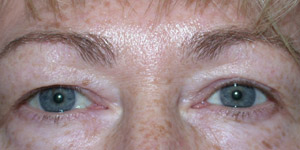
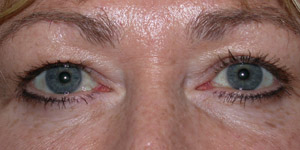
Before and after external lower eyelid blepharoplasty
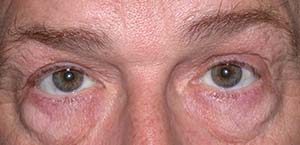
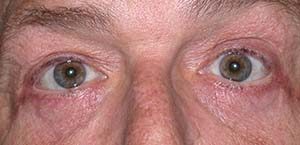
Ptosis
Ptosis (tō′sĭs) is a term used to describe drooping of the upper eyelid. In this condition, one or both of the upper eyelids drops down and covers the eyeball. If it blocks the pupil, it can obstruct your vision. In these cases, your medical insurance generally covers surgical correction. Ptosis most often occurs because the connection between the eyelid muscle and the eyelid has slipped with age. It can also occur as a result of a paralysis of the eyelid after a stroke or injury, or may even be present at birth.
Ptosis surgery can be performed to elevate the eyelid(s) to a more normal position. It is typically performed in our office. Local anesthesia is used. An incision is made in the natural crease or fold of the upper eyelid. Stitches are used to tighten the connection between the eyelid muscle and the eyelid. Some swelling and bruising can be expected after surgery, which slowly subsides over the next one to two weeks. Stitches in the skin are removed one week after surgery, at which time you can generally go back to wearing make-up and/or contact lenses.
Before and after repair of ptosis both upper eyelids
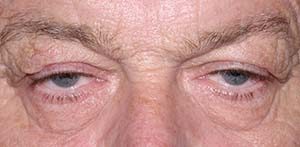
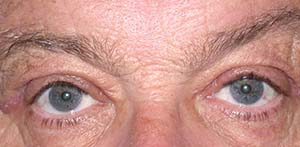
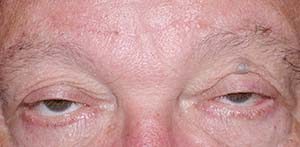
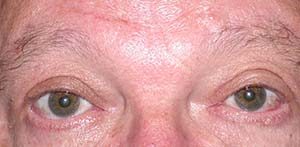
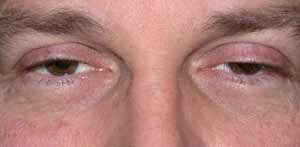
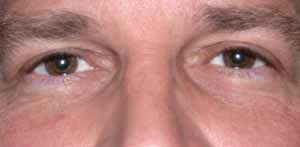
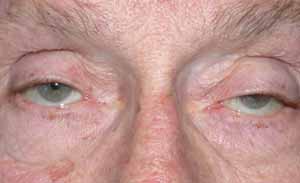
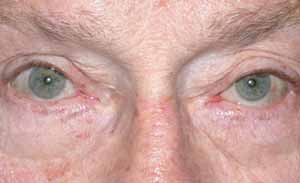
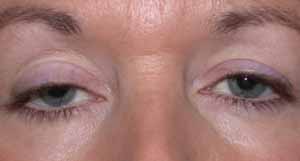
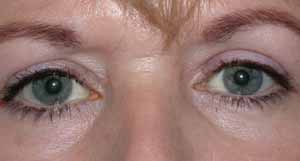
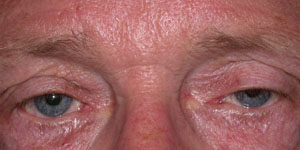
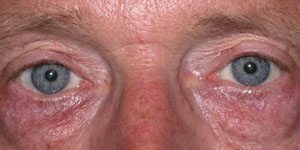
Before and after repair of ptosis left upper eyelid
Before and after repair of ptosis left upper eyelid and blepharoplasty of both upper eyelids
Eyebrow Surgery
The position of the eyebrows relative to the eyes and upper eyelids is important. With age, often times the eyebrows descend over your eyelids, and can begin to interfere with your vision. Other times, a paralysis of the eyebrow from either a stroke or Bell’s palsy can cause it to drop over the eye. Surgery can be performed to lift the eyebrow into a more normal position. Often times, the surgery is combined with a blepharoplasty, using the same incision.
Before and after repair of a right and left eyebrow droop.
Before and after repair of a right eyebrow droop along with a right and left upper eyelid blepharoplasty.
Ectropion Surgery
Ectropion is a condition in which the eyelid turns outward. It typically affects the lower eyelid(s). It most commonly occurs from stretching and laxity of an eyelid with age, or can result from a stroke or paralysis (such as Bell’s Palsy), or from an injury or surgery. Affected eyes are typically red with symptoms of mattering, irritation, and tearing. It can be repaired with surgery to reposition the eyelid.
Before and after Ectropion corrective surgery
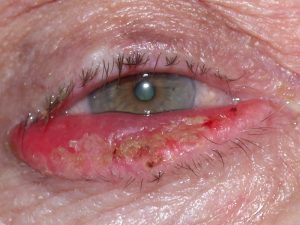
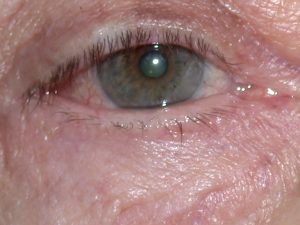
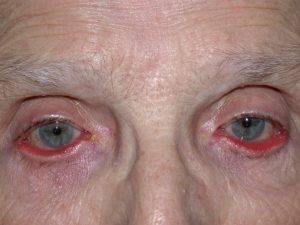
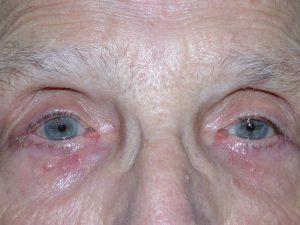
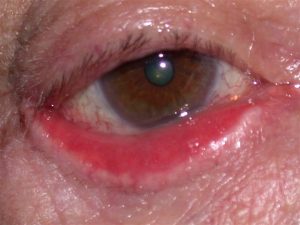
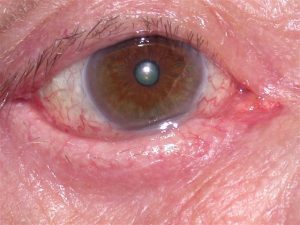
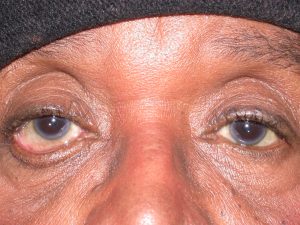
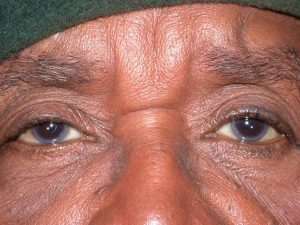
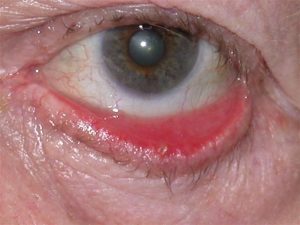
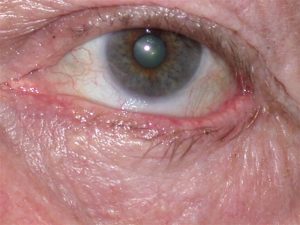
Reconstructive Eyelid Surgery
The skin of the face and eyelids is vulnerable to the development of various growths, cancers, and traumatic injuries. When a skin cancer involves the eyelid, it can destroy the structure of the eyelid and affect its ability to protect the eye. Therefore, eyelid skin cancers must be carefully and completely removed, and just as importantly, the eyelid must always be correctly reconstructed in order to restore its ability to protect the eye. Any suspicious or new growths on the eyelids should be examined.
Basal cell carcinoma
Malignant melanoma
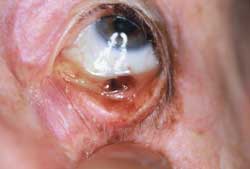
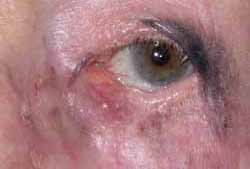
Before and after reconstruction of skin defect after excision of basal cell carcinoma
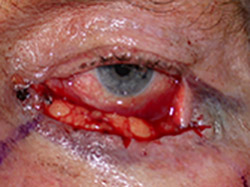
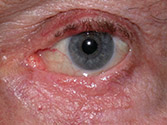
Before and after removal of benign eyelid cyst and reconstruction
Before and after repair of eyelid laceration and avulsion after bungee cord injury
Before and after removal of basal cell carcinoma and reconstruction
